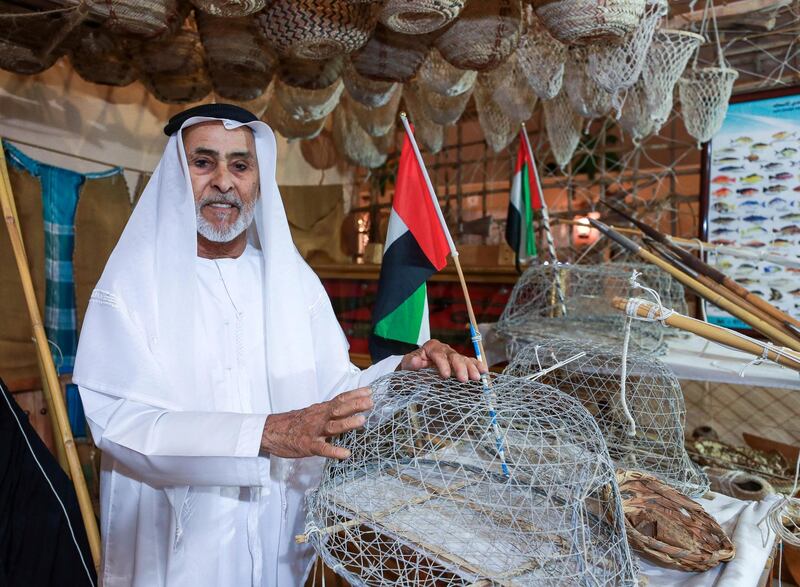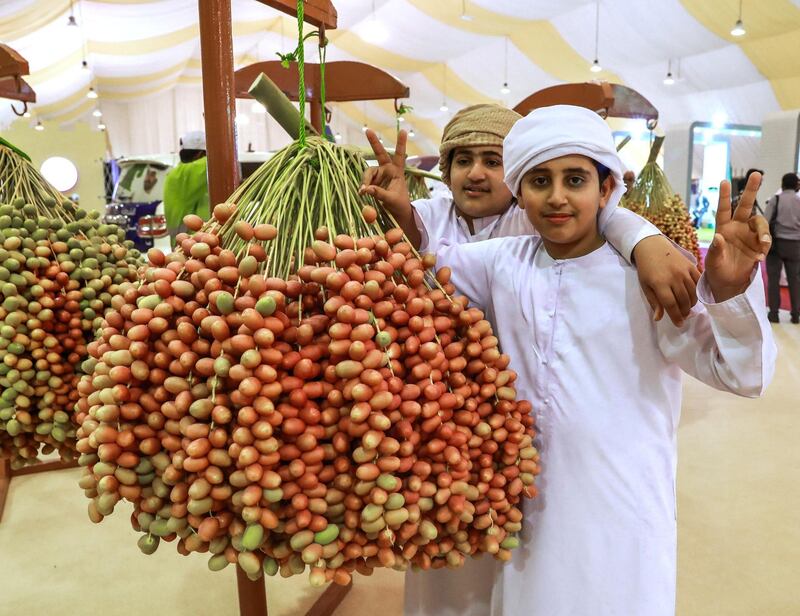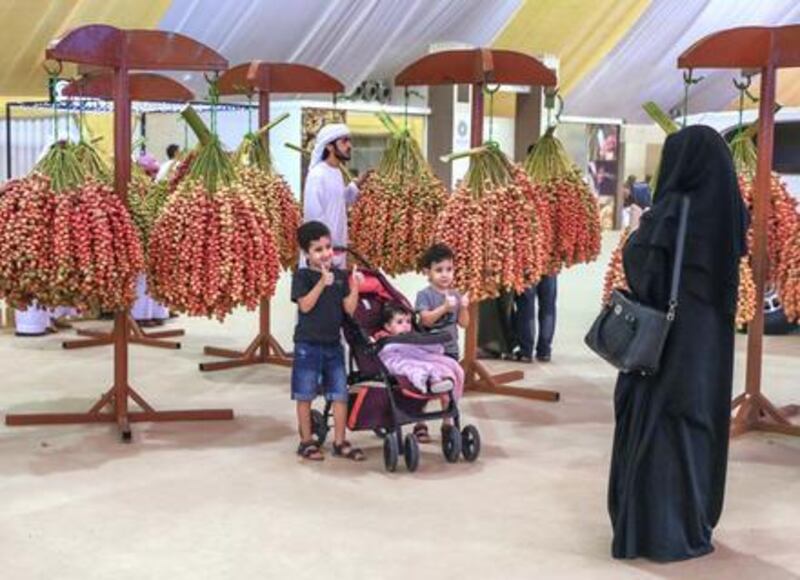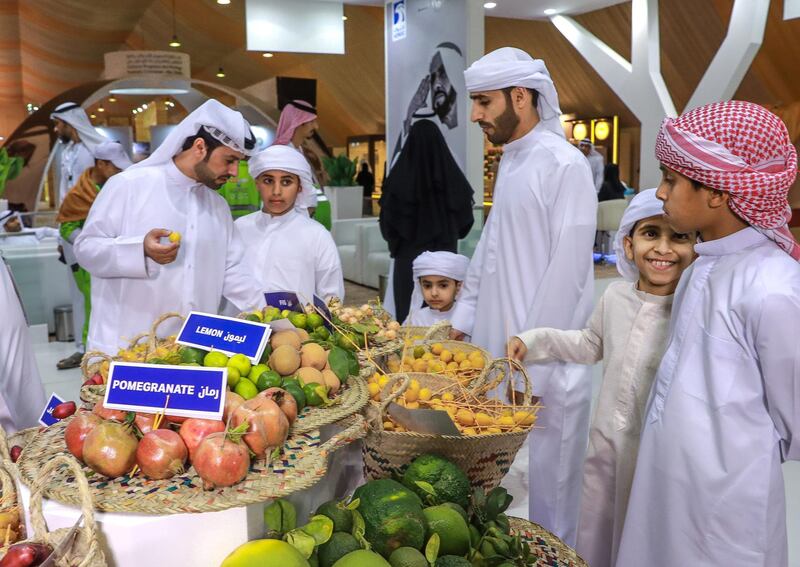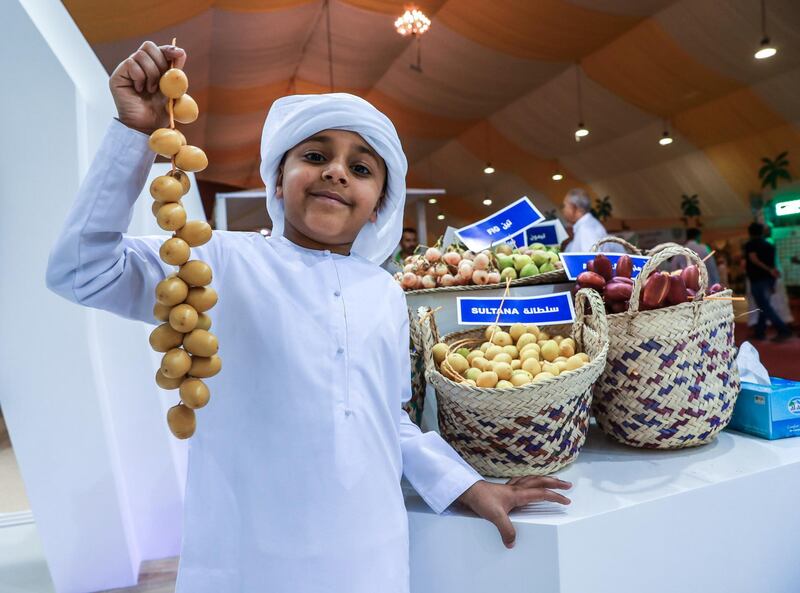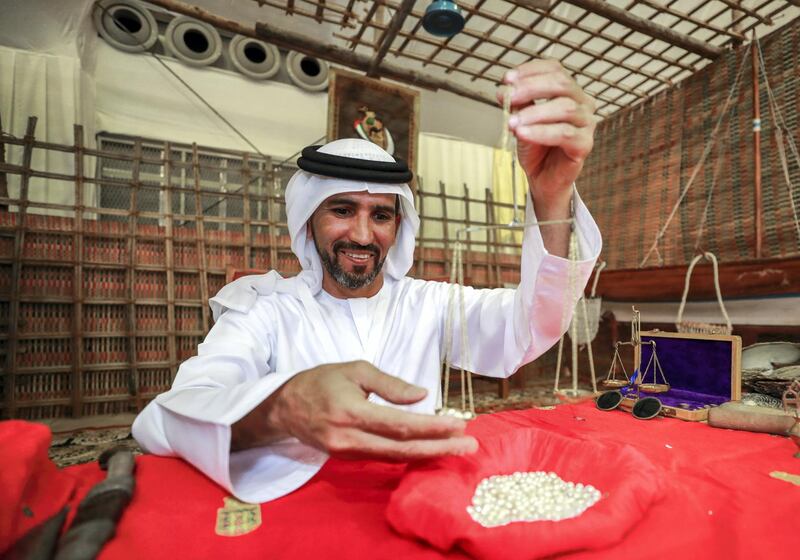Amid the crowds flocking to the Liwa Date Festival, an elderly Emirati sits in a stall, calmly eyeing his collection of treasures.
Jumaa Al Rumaithi, 85, has been collecting relics from the UAE since the 1940s – and they are all on display this year at the festival.
His stall is plastered with obsolete objects once used for everyday life in Abu Dhabi's Al Dhafra Region, where he was raised.
From hard wooden flip-flops made of palm trees to rudimentary medical tools, original sea pearls and old coins, the items attract the old and young alike.
“We had to make our own footwear to go outside – otherwise there was nothing to wear, no place to buy from,” he says, gesturing to his home-made shoes.
Mr Al Rumaithi, who is a retired sea captain and national heritage expert, made all five pairs of the flip-flops he proudly displays. They are old, he says: “Since before Sheikh Zayed passed away, since the beginning of the Union.”
Each pair of slippers – which took him less than an hour to create – are made of rope from palm trees, while the base is made from hard wood. Their appearance suggests that practicality outweighed comfort.
“When I had them on display at Qasr Al Hosn, foreign visitors begged to buy them and take them back home, but I told them they are not for sale.”
He says the slippers represent a heritage he cannot give up.
“One who gives up his heritage is left with nothing,” he says.
His booth attracts Saeed Al Marar, 25, who pulls up a chair to sit beside Mr Al Rumaithi and ask him about UAE life in the past.
“It makes me sad that we did not catch these days and we did not get to know all of this,” the young Emirati says.
“This all came from days of hunger and hardship. I wish you will never have to live such days,” Mr Al Rumaithi replies with a smile.
Visitors as young as 9 meander to his stall, stepping into the past and admiring the objects on display.
Shanu Abdullateef visits the booth in search of items connecting his Indian heritage with the Gulf.
“Here you see how the UAE was formed. People lived off collecting pearls and fishing. This gives me goosebumps,” the physiotherapist says.
“And here you see the weapons that Sheikh Zayed used, how they would catch fish, and other antique pieces.
“I am fond of this UAE culture and life; the [palm tree] slippers are a new thing I did not know about,” he says.
“The cooking and coffee tools, I was looking for those.
“These have a connection with India,” he says, picking up an old fizzy-drink bottle. The bottle was sealed with a glass ball that fell into the drink once opened.
“This thing came from India: the soda bottle with the ball inside, when you put pressure inside the ball comes up and the bottle closes,” he says.
“The migration of culture from India brought this here; there are still places in India where you can find this.”
He asks Mr Al Rumaithi to show him the tools used for collecting pearls.
_______________
Read more:
Family rivalry plays out at Liwa Date Festival
Watch: Fast facts about the Liwa Date Festival in UAE
________________
"We did not use tools. The diver would hang on to this and go down to the bottom," Mr Al Rumaithi says, holding a rope with a heavy metal base tied to it.
“Another person on the boat would be holding the other end of the rope. As the diver collected the pearls, he would place them in these nets that hang off a piece of wood.
“Arabs before used to have a vision. Once they sail on their boats, how would they know if a certain area has seashells on the ground or not?” he says.
“They used this,” he says, pulling out another rope with a smaller metal base attached to it. “If this came out with white sand on it, it meant there were no seashells, but if it came out with red powder on it, they knew there were seashells below.”
Mr Al Rumaithi slowly walks to the other side of his mini exhibition and picks up a pot covered in a cloth with four holes poked into it.
“This was a treasure – if you didn’t use this, you had nothing to eat.
"You would step into the water, put this inside and leave – after 15 minutes, you come back and find it filled with shrimps. So you take it out to shore, empty it, take the shrimps, start a fire and grill them," he says.
“You ate it and lived. If you couldn’t do this, you didn’t eat. There was no food. Those were the needs of life,” he says.
Mr Al Rumaithi is also the author of a picture book featuring some of the objects he has collected – Darayesh Ala Al Madi Al Jameel (Windows on the Beautiful Past).
